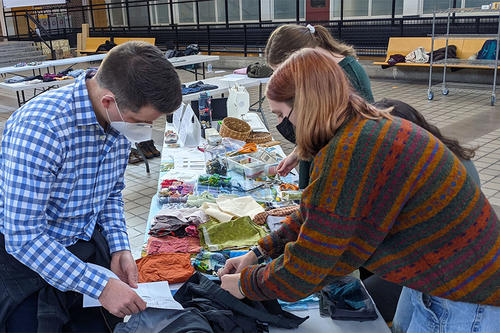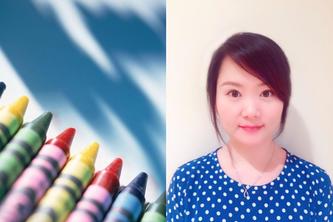
You can’t break something that is already broken. Understanding this wisdom is the first step in the repair process and part of the foundation of a new freshman seminar in the College of Design.
Led by Fabrication Director Molly Sanford and recent lecturer Lindsey Strange, “Dare to Repair” offers students from across the University of Minnesota a chance to learn about the concept of repair, product life cycles, consumerism, waste management and sustainability, and community engagement through a variety of hands-on projects and field trips.
“As a college, we have a tremendous opportunity to shape the next generation of designers,” says Sanford. “Hands-on repair reconnects us with our belongings and empowers us on an individual scale to interrupt unhealthy patterns of consumerism.”
Students in the class worked on repair projects with their own possessions and conducted research into how their items were made, packaged, and transported around the world before they wound up in a store and ultimately a home.
“We have very little connection to or awareness of how raw materials for consumer goods are sourced and processed,” says Sanford. “By mapping out the life cycle of an article of clothing, we made these global systems more tangible for students, hopefully increasing their desire to care for and extend the lives of their belongings.”
Students also zeroed in on obstacles to the repair process and learned how companies often intentionally discourage repair by making it difficult to access the insides of their products.
“One takeaway we hoped to instill in students is that we can design products and business models differently to facilitate repair—and reuse, remanufacturing, and recycling,” says Strange.
Owen Bond, a plant science major in the College of Food, Agricultural and Natural Resource Sciences, gained a much greater perspective of repair as a whole.
“The biggest impact the class has had on me is how I think about consumerism. It's easy as a young person to become nihilistic when confronted with climate change caused by corporations, but in reality, individual actions do matter,” says Bond. “Repair is connected to sustainability in that it generates very little waste. It’s also fun and allows you to be creative while reusing old materials and saving money,” he says.
As a day trip, the class visited Free Geek Twin Cities, an organization dedicated to providing access to pre-used tech products and reducing electronic waste. Students worked alongside Free Geek volunteers to disassemble electronics like computer consoles and sort parts into recyclable piles. Through this process, the class learned what design features, materials, and assembly methods make certain tech more repairable than others.
Drawn to the class initially for its focus on sustainability, Anke Wiersma, an architecture major, also discovered the connective power of repair in communities and families.
“By stopping pieces from reaching the landfill, I can do something that lessens the environmental impact within my community and has the potential to make life better for those that live in the future,” says Wiersma.
The class also had the opportunity to meet virtually with Fixit Clinic founder Peter Mui, who has helped establish clinics all over the country. Mui introduced students to Fixit Clinic processes as well as proposed legislation like Right to Repair, which would give consumers the freedom to pursue independent repair options for their possessions.
Students also visited the Minnesota ReUse Program to see how the University is investing in a culture of reuse.
-------
This story is adapted from the original, where you can take a look at the class’s work through their zine.
- Categories:
- Architecture and Design





